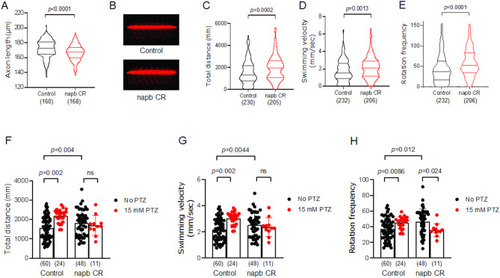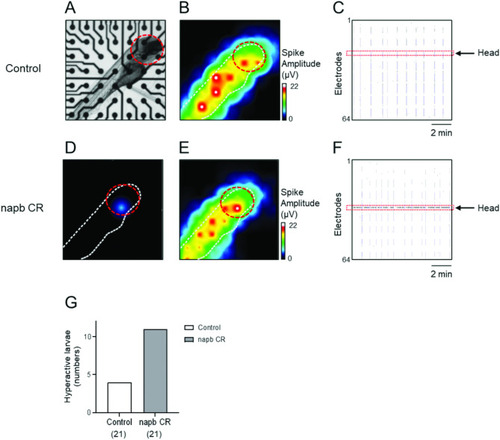- Title
-
Seizure-like behavior and hyperactivity in napb knockout zebrafish as a model for autism and epilepsy
- Authors
- Shin, K.C., Hasan, W., Ali, G., Abdelrahman, D., Abuarja, T., Stanton, L.W., Da'as, S.I., Park, Y.
- Source
- Full text @ Sci. Rep.
|
Hyperactivity and seizure-like phenotype of |
|
Electrical hyperexcitability in |
|
Seizure-like hyperexcitability induced by PTZ. Seizure-like neural hyperactivity was monitored using MEA. The neural activity of zebrafish larvae was recorded before and after treatment with 15 mM PTZ. ( |



